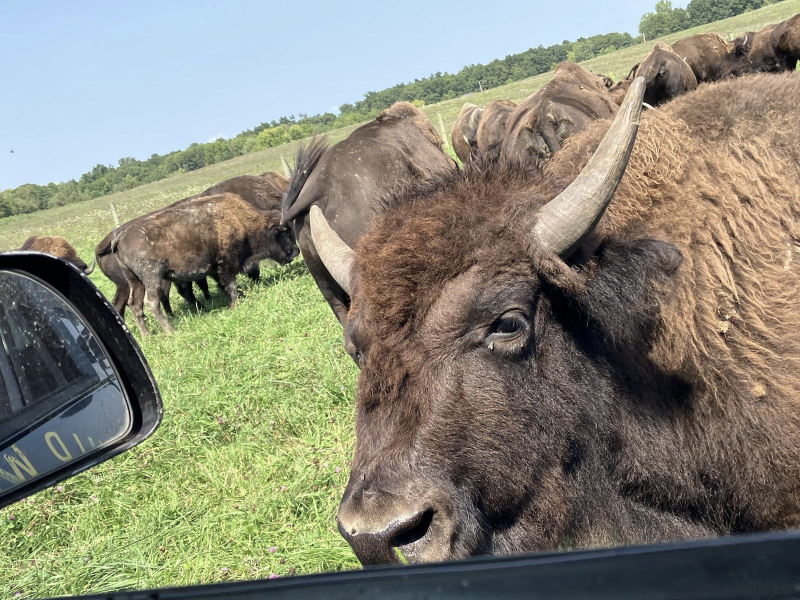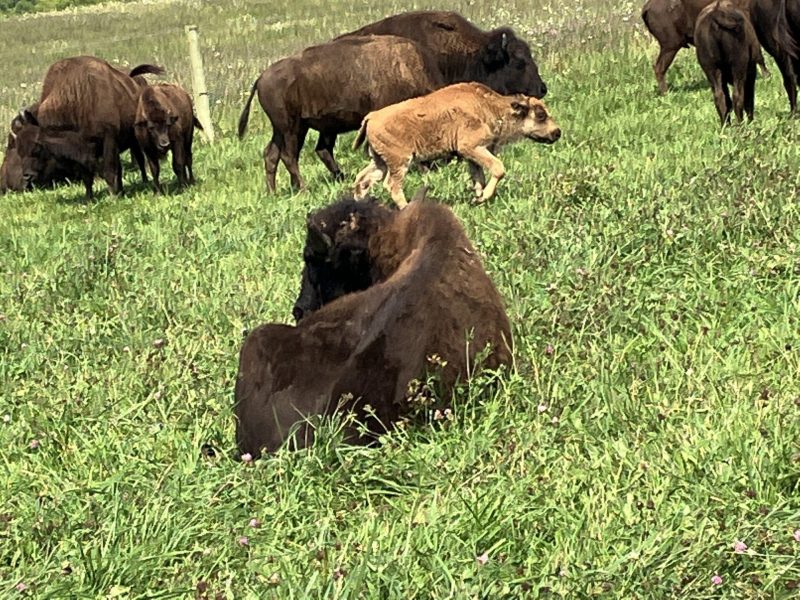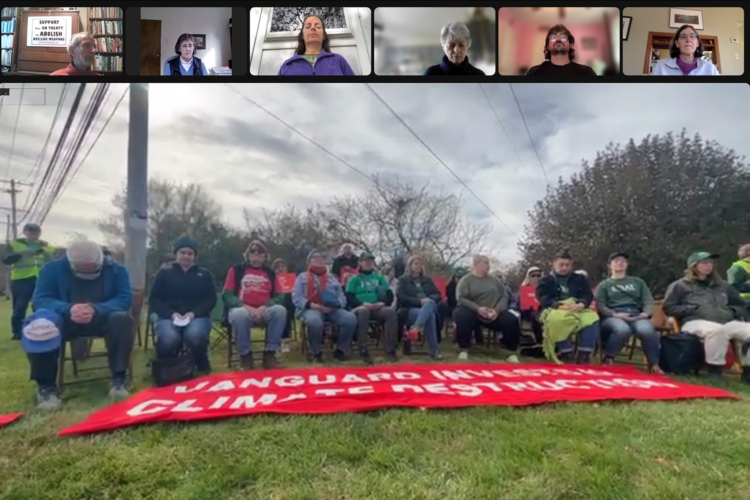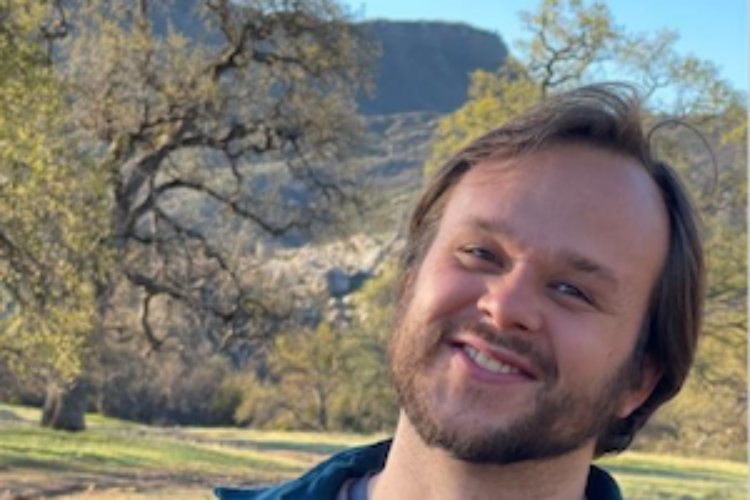Flipping the Narrative to Earth Regeneration

by Sheree Cammer.
On a train trip back east last year, my cousin and his wife introduced me to the Wild Winds Buffalo Preserve in Fremont, Indiana. Bill “Three Paws” Elias drove our tour in a pickup truck. I had the best seat: front seat passenger. The herd was placidly grazing, their noses buried in the sweet red clover blossoms. They ambled along together from time to time in the ample fenced paddock, one of seven. They are regenerating habitat as they have done for millennia, grazing the prairie grasses without overgrazing, while fertilizing them with manure. People eat meat from the culls and help care for the herd. “They tell us when they want to move,” Bill drawled. “The whole herd will come up to the gate and let me know they’re ready for fresh pasture.”
Some buffalo wandered freely over to the truck. One buffalo approached within inches of my face. Our eyes met, frankly, kin greeting kin. The afterimage remains. Those eyes—so big, kind, and wise—transformed me: I am to speak for life. I am to read that gaze, and intuit and convey an urgent call to people everywhere: Regeneration.
Regeneration focuses on the health of interconnected ecosystems and maximizing biodiversity, including animals as an integral part. Regeneration is only possible when humankind tunes in to the natural world, befriending all life. Regeneration also focuses on the surrounding human community and socioeconomic systems that benefit nature and humans.
Communities can come together, regardless of political affiliation, and regenerate landscapes so that they become resilient to flooding, drought, heat waves, and forest fires. The plants and trees in healthy landscapes hold onto water and draw enormous amounts of carbon dioxide out of the atmosphere. Their roots pass the carbon along to the underground web of microbial and fungal communities. The carbon can remain underground indefinitely if soils are not bare or disturbed, and roots are alive. Soil fertility increases, and more food and pasture can grow.
And this is happening all over North America. People are preparing for changing conditions by working cooperatively and freeing themselves from the corporate system. They’re restoring barren landscapes, establishing wildlife corridors to connect ecosystems, planting edible urban forests, raising backyard chickens, composting, encouraging native plants and trees in place of lawns, and more. Some are “rewilding” degraded land by planting what grew there a few centuries ago, and bringing back an essential part of any ecosystem: predators. Species are returning. This list of some regenerative principles and practices may be useful:
- Keep soil covered with mulch, compost, and cover crops such as nitrogen-fixing clovers and a variety of crops.
- Keep living roots in the soil as often as possible.
- Plow or till as little as possible.
- Increase biodiversity by planting pollinator gardens with native plants, fruits, nuts, deep-rooted grasses, perennials, and constructing ponds or wetlands.
- Support managed grazing. Animals are moved from pasture to lush pasture before they overgraze it.
George Fox wrote, “I saw also that there was an ocean of darkness and death, but an infinite ocean of light and love, which flowed over the ocean of darkness.” We know this darkness: despair, fear, hate, lethal addictions, and suicide. Yet many people, especially younger ones, are turning away from the darkness, to the joy of earth regeneration. May we all together become the intergenerational re-generation.
Sheree Cammer, a member of Albany, NY Friends Meeting, chairs the meeting’s Friends in Unity with Nature (FUN) Committee.



